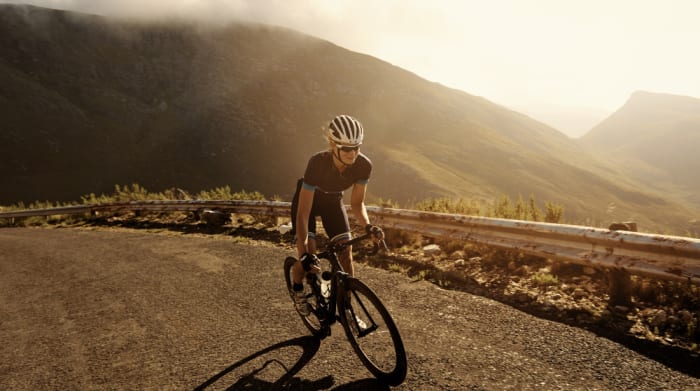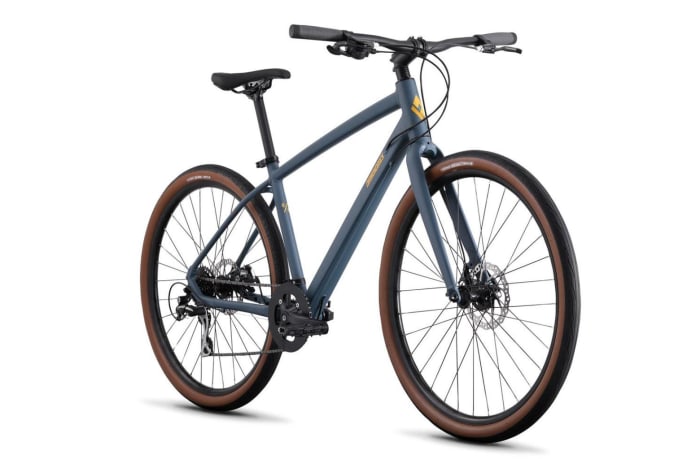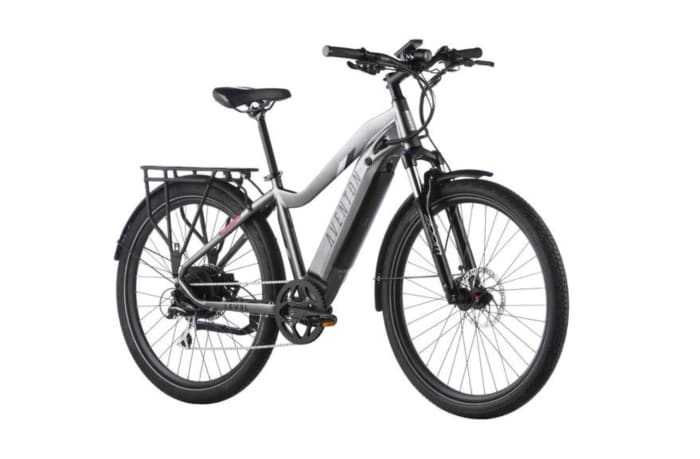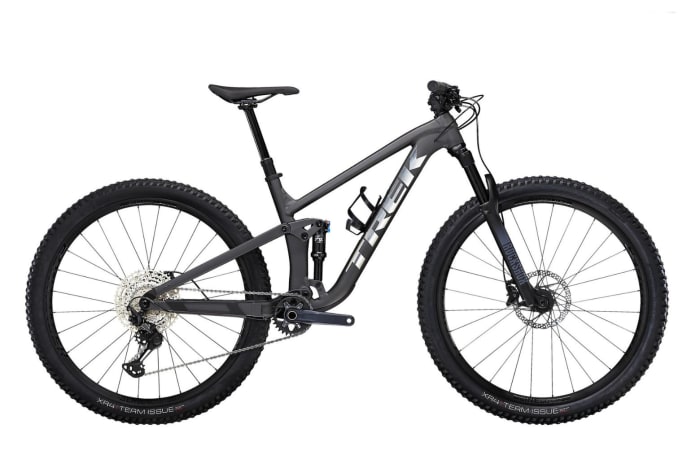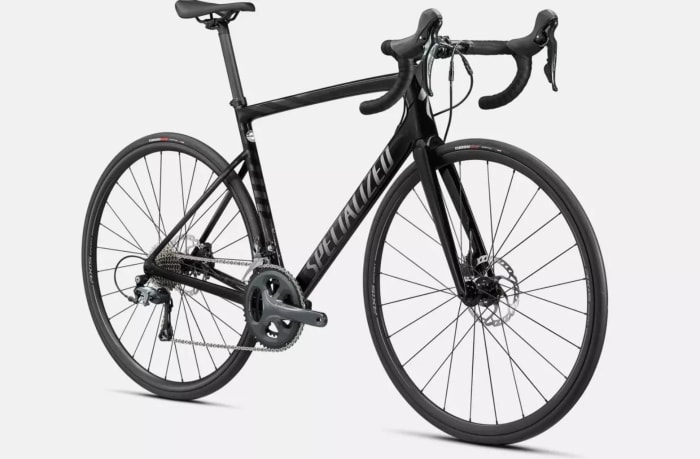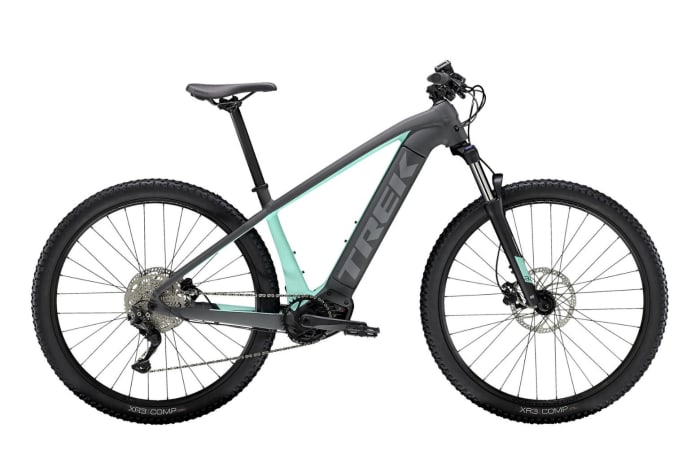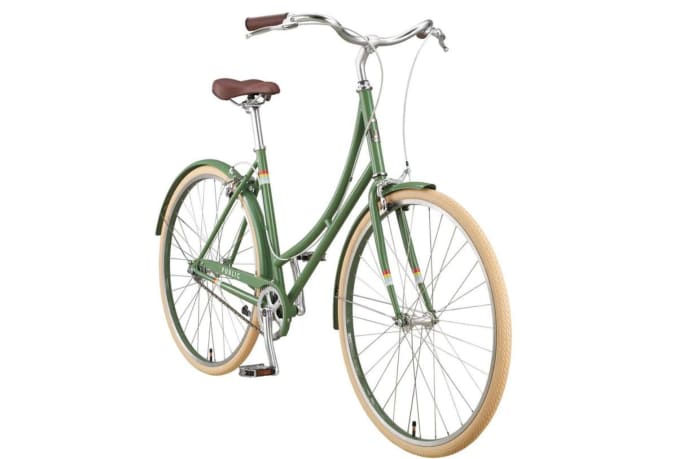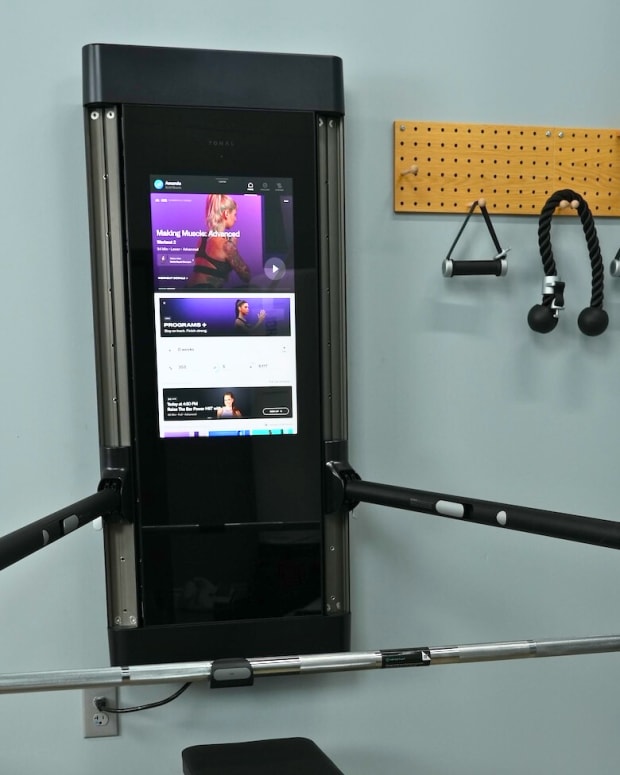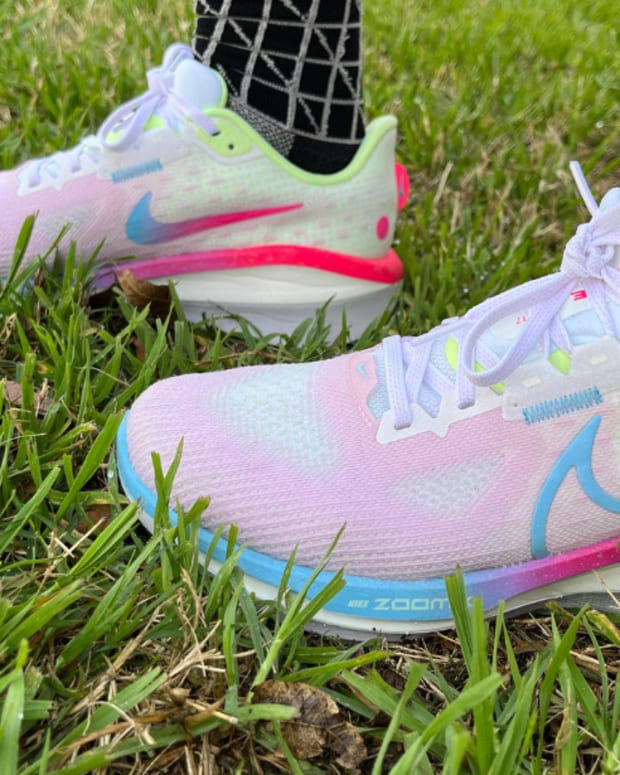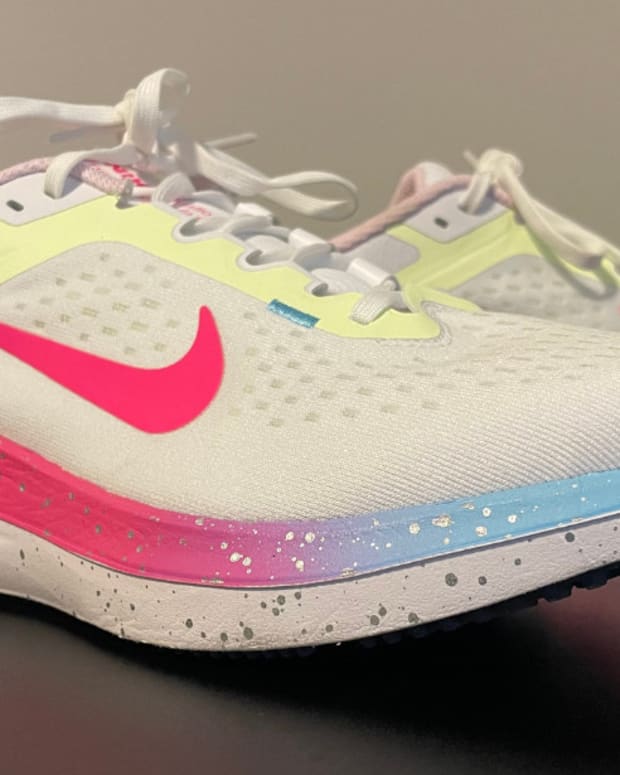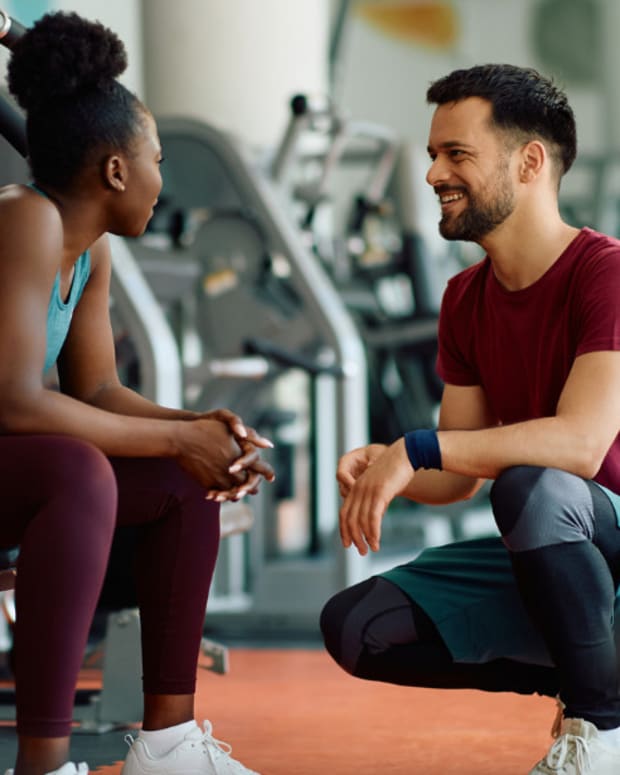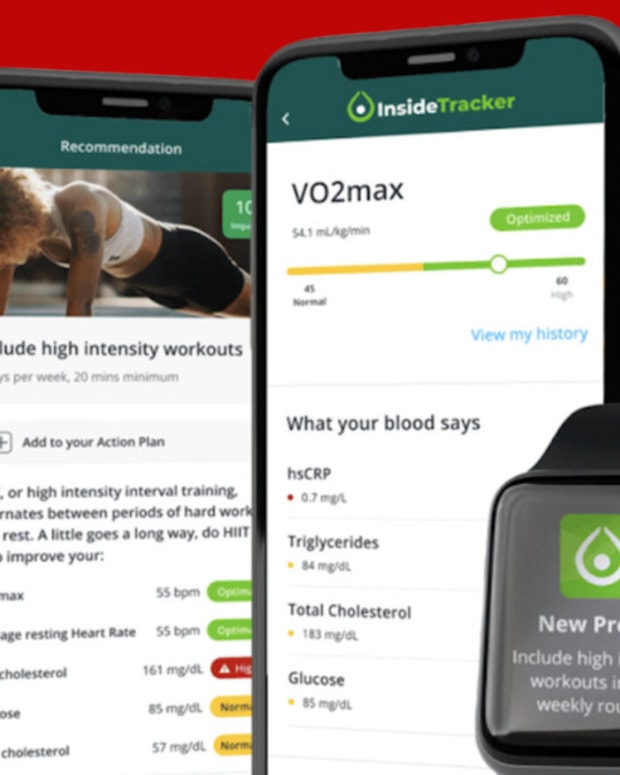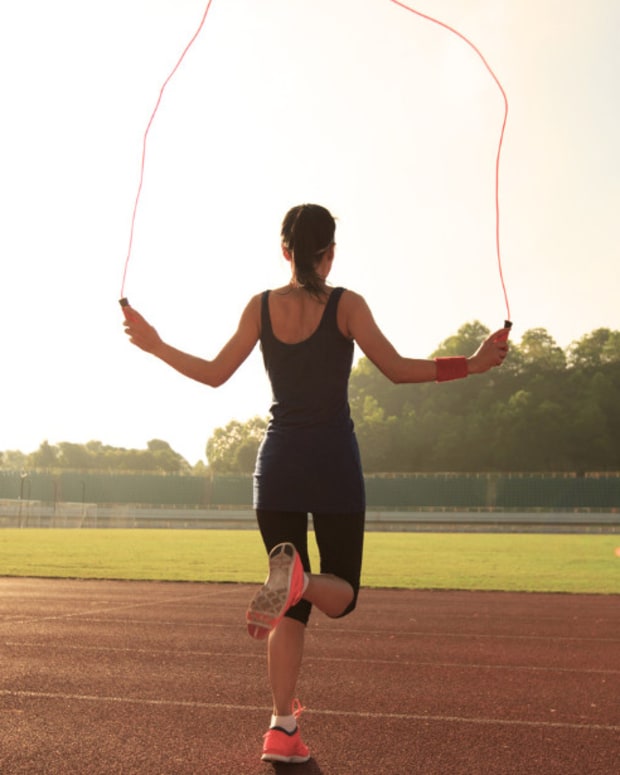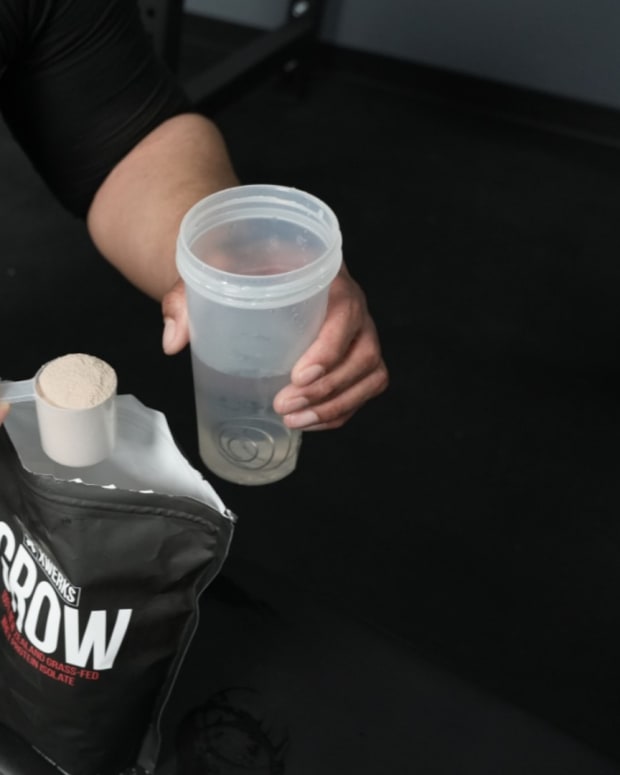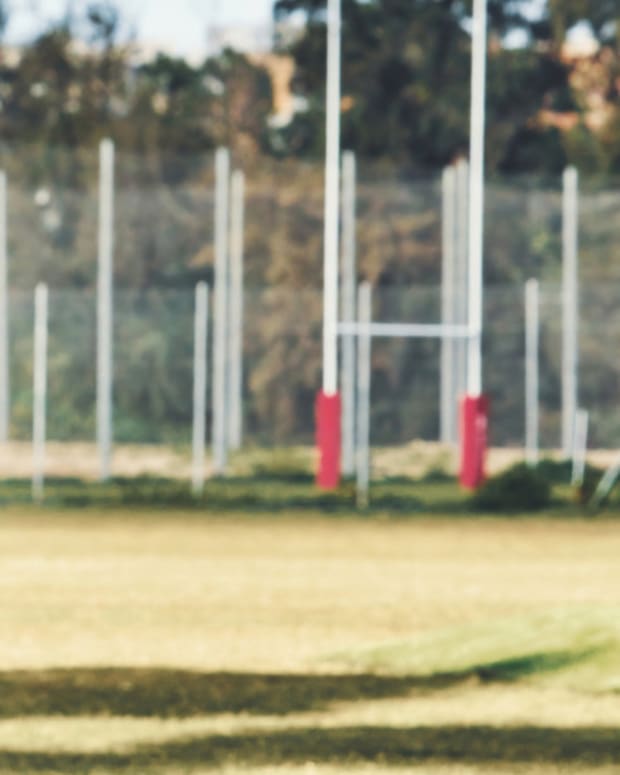The products featured in this article have been independently reviewed. When you buy something through the retail links on this page, we may earn commission at no cost to you, the reader. The Sports Illustrated editorial team is not involved in the creation of this content. Learn more here.
This shouldn’t have to be said in 2024 (and, yet, here we are), but women’s bikes are not just smaller, pinker versions of men’s bikes.
Sure, men may still be the dominant gender in cycling, but of the 103 million people who rode a bike in 2022, 27 percent were female and about 40 percent were male, according to a recent survey conducted by the PeopleforBikes Foundation—which means women are starting to close the gap. And all women deserve bikes that are specifically designed to support female anatomy and biomechanics, whether they’re riding to work, cruising around town or competing in an endurance race.
Of course, finding the right bike depends on your personal preferences: road or mountain biking, cruiser or electric bike. And while nailing down the perfect fit may take a little more effort than scrolling the internet—like visiting a local bike shop for a proper fitting and testing out different models—this list of the best bikes for women, along with insights on what types are available and what features to consider, can help get you up to speed.
Our Picks for the Best Bikes for Women:
- Best Hybrid Bike for Women: Diamondback Division 1 Urban Bike
- Best E-Bike for Women: Aventon Level.2 Commuter E-Bike
- Best Cruiser Bike for Women: Electra Townie 7D 24 Step-Thru
- Best Mountain Bike for Women: Trek Top Fuel 7
- Best Road Bike for Women: Specialized Tarmac SL6
- Best E-Mountain Bike for Women: Trek Powerfly 4
- Best Step-Thru Bike for Women: Public Bikes C1
- Best Rail Trail Bike for Women: Trek Dual Sport 1 Gen 5
Best Hybrid Bike for Women: Diamondback Division 1 Urban Bike
Key Features:
- Price: $835
- Bike type: Urban/commuter bike
- Sizes: Small, medium, large, extra large
- Weight: Not listed
- Frame material: Aluminum
- Drivetrain: 1x, rear derailleur
City riding can be notoriously difficult on your bike—and body, as anyone who’s ever ridden full-speed over a pothole knows. The Diamondback Division 1 Urban Bike was designed for commutes, running errands, or just riding around, with 27.5-inch tubeless tires that promise traction while absorbing the impact generated by most obstacles (they’re also very unlikely to pop a flat). And thanks to the lightweight aluminum frame, you’ll have no problem hoisting this bike up any number of stairs.
Pros:
- Tires are especially grippy in wet conditions
- 1 x 8 speed drivetrain is easy to maintain
- Features high-quality Shimano drivetrain and Tektro mechanical disc brakes
Cons:
- Disc brakes are more difficult to maintain
- Shifting components don’t quite match the price point
Best E-Bike for Women: Aventon Level.2 Commuter E-Bike
Key Features:
- Price: $1,799
- Bike type: Commuter e-bike
- Sizes: Regular, large
- Weight: 54 pounds
- Frame material: Aluminum
- Drivetrain: Hub
If you don’t want to work up a sweat while commuting to and from the office, Aventon’s Level.2 Commuter E-Bike packs a lot of power into a design that mimics the look of a traditional city cruiser. It even feels like a more traditional bike, thanks to the integration of a torque sensor that allows for more efficient battery use (translation: the bike can sense how hard you’re pedaling and deliver additional power via the 500W motor as needed). With 27.5-inch tires that eat up the road—a full charge gives you a range of 60 miles—you can push this bike up to 28 miles per hour using pedal assist (using just the throttle, you’ll top out at 20 miles per hour).
Pros:
- Torque sensor creates a more natural riding experience
- Available in four color options
- Comes with preinstalled fenders and a rear rack
Cons:
- This version isn’t as powerful as the first in the name of preserving battery power
- Not meant to be ridden in prolonged rain
Best Cruiser Bike for Women: Electra Townie 7D EQ Step-Thru
Key Features:
- Price: $729.99
- Bike type: Step-thru/recreational
- Sizes: 26-inch wheel
- Weight: 31 pounds
- Frame material: aluminum
- Drivetrain: derailleur
It doesn’t get more classic than the Electra Townie 7D EQ Step-Thru, which is the best-selling bike in the U.S. It’s also a great beginner option, allowing you to sit upright and flat-footed—with the pedals positioned farther forward—so you can easily step off the pedals and onto the ground if needed. The nearly two-inch wide tires also ensure stability and security while on the road (and can even handle gentle trails). Despite the retro look, the Townie is built with modern components like Shimano Revo shifters and a Shimano Tourney drivetrain, puncture-resistant Bontrager tires, and an ergonomic saddle.
Pros:
- Very safe and comfortable for newer riders
- Fully charges in under five hours
- Can easily attach a rear rack and baby seat
Cons:
- Has a longer frame than a standard town bike, which makes it bulkier
- Upright position makes standing tough, which can be challenging for uphills
- Maximum weight capacity is only 250 pounds
Best Mountain Bike for Women: Trek Top Fuel 7
Key Features:
- Price: $3,629.99
- Bike type: Mountain bike
- Sizes: S, M, M/L, L, XL
- Weight: 32.7 pounds
- Frame material: Aluminum
- Drivetrain: Derailleur
If you’re serious about mountain biking, the Trek Top Fuel 7 is the kind of machine that moves with you—fast—as you tackle the toughest terrain. The full suspension system was designed to react to acceleration and braking forces independently, so you have more control over the bike as a whole, while the hydraulic disc brakes allow you to be more precise with your braking power. For even better handling, Trek’s Mino Link feature allows you to make small adjustments to the frame geometry, depending on the terrain; for example, a steeper angle at the front of the bike allows for quicker steering, which is great at slower speeds, but a slacker angle is more stable at high speeds.
Pros:
- Smaller sizes have a top tube that dips down for a lower standover height, which accommodates shorter riders
- Has internal storage for tools
Cons:
- Very expensive
- 120mm of suspensive travel can be jarring
Best Road Bike for Women: Specialized Tarmac SL6
Key Features:
- Price: $2,700
- Bike type: Road
- Sizes: 44, 49, 52, 54, 56, 58, 61
- Weight: 16.6, 16.82, or 18.36 pounds
- Frame material: Carbon
- Drivetrain: Derailleur
The Tarmac was designed to go fast—like, really fast (it’s used by pro racing teams). Not only can you lift the lightweight carbon frame with a single hand, it’s actually 20 percent lighter than the previous iteration, a drop in weight that translates to speeds 30 seconds faster over the course of 25 miles. Plus, Specialized works with Retül, a company that collects and analyzes data to inform bike fit, a partnership that allowed the brand to build seven different size options—in a unisex fit—that each use specific measurements to ensure you’ll feel 100 percent comfortable in the saddle, no matter how long you’re riding.
Pros:
- Enough clearance for tires up to 30mm if riding on rougher terrain
- Power saddle is very comfortable
- Very responsive
Cons:
- Expensive
- Carbon frame can be easily damaged
Best E-Mountain Bike for Women: Trek Powerfly 4 Gen 4
Key Features:
- Price: $3,649.99
- Bike type: Electric mountain bike
- Sizes: XS, S, M, L
- Weight: 51.53 pounds
- Frame material: Aluminum
- Drivetrain: Derailleur
If you want to get out in the wilderness but don’t want to rely on your own leg power to tackle the gnarliest climbs, an affordable electric mountain bike like Trek’s Powerfly 4 can help you cover more terrain without wearing yourself out. This one is equipped with a removable Bosch PowerTube 500Wh battery; Bosch high-performance CX 250W motor; and a smooth-shifting Shimano drivetrain, all of which help you reach speeds of up to 20 miles per hour on the trails. Plus, the bike’s intelligent eMTB mode automatically adjusts the amount of assist it gives you based on the terrain—without you having to do a thing.
Pros:
- Smaller sizes have a top tube that dips down for a lower standover height, which accommodates shorter riders
- Compatible with different rack mounts
- Battery is encased for protection
Cons:
- Very expensive
- Battery lasts a little as 15 miles in Turbo mode, depending on circumstances
Best Step-Thru Bike for Women: Public Bikes C1
Key Features:
- Price: $550
- Bike type: Step-thru/cruiser
- Sizes: S/M, M/L
- Weight: 30 pounds
- Frame material: Steel
- Drivetrain: Single speed
How cute is this city cruiser? Little design details go a long way, like fenders, a chain guard and painted rims that match the high-quality steel frame. The upright geometry is similar to that of the Electra Townie, complete with the same step-thru design that makes getting on and off super easy—features that beginner and casual riders alike will appreciate. Cruisers have a reputation of veering toward the heavier end of the weight spectrum, but at 30 pounds, this one isn’t a pain to push or lift if need be.
Pros:
- Available in five colors
- Front and rear rack mounts are standard
- Affordably priced
Cons:
- Single-speed drivetrain can make riding uphill more challenging
- Not as durable as more expensive options
Best Rail Trail Bike for Women: Trek Dual Sport 1 Gen 5
Key Features:
- Price: $749.99
- Bike type: Hybrid
- Sizes: S, M, L, XL
- Weight: 30.61 pounds
- Frame material: Aluminum
- Drivetrain: 2 x 8
Trek’s Dual Sport 1 falls somewhere between a road and trail bike, which makes it a versatile option for riders—both on the weekdays, for commuting, and the weekends, when you’re out for fitness or recreation. With a lightweight aluminum frame and light gravel tires, you’ll be able to pick up the pace on pavement while the 27.5-inch tires are wide enough that you’ll feel more in control when navigating potholes or easy trails; wherever you are, there’s a wide range of gearing options so you're never spinning your wheels or working too hard.
Pros:
- Frame is compatible with racks, a kickstand, fenders, lights and more
- New mounting points pair with Bontrager Adventure Bags to secure bags without straps and bungees
- Wider tires offer good grip on multiple types of terrain
Cons:
- Mechanical disc brakes aren’t as high-performing as hydraulic disc brakes
- No built-in accessories
The Benefits of Biking
Cycling is a versatile form of cardiovascular exercise. Varying the intensity at which you ride can temporarily increase your metabolism, which allows you to burn more calories, including while at rest, according to a 2020 study in Movement and Sports Sciences. At the same time, it helps build strength in your lower body, 2017 research in Physiological Reports confirmed—without adding impact to your joints, like running. It also improves flexibility and helps with coordination and balance, says the Cleveland Clinic.
It can even help prevent heart issues such as stroke, heart attack, and high blood pressure, and—if done consistently over at least five years—decrease your mortality rate by 35 percent, 2021 research published in JAMA Intern Medicine reported.
Beyond the physical benefits, cycling improved cognitive functioning and well-being and lowered stress levels in a 2019 study published in PLoS One. And as a commuter option, biking decreases your carbon footprint by 67 percent compared to taking a car, according to 2021 research published in Transportation Research Part D: Transport and Environment.
How Are Women’s Bikes Different from Men’s Bikes?
The main difference between women’s and men’s bikes is the fit, which shows up in the geometry of the frame. Women are generally shorter than men, so women’s bikes often have shorter stack heights, AKA how tall the front of the bike is; women also generally have shorter torsos than men, so women’s bikes have shorter reach lengths, AKA the distance between the saddle and the handlebars. A few other features to keep in mind for a women’s bike: A shorter stem (the part of the bike that connects your handlebars to the frame), a shorter but wider saddle, shorter crank arms (the levers attached to the pedals), more accessible brake levers, a narrower handlebar and an adjusted suspension system to handle lighter weight.
Of course, the best bike for you is the one that best fits your body—whether it’s designed for a specific gender or not. Getting properly fit at a bike store can go a long way in helping you find the right bike for you; the bike store can also make adjustments and swap out components if need be after you’ve purchased a bike.
What Types of Women’s Bikes Are There?
There’s a wide variety of bikes for women. You’ll find road bikes, which are designed for speed; mountain bikes, built for off-road riding; hybrid bikes, which can handle multiple types of terrain; electric bikes, which use a motor for more power; and cruisers, for comfortable, recreational riding; all designed to accommodate female riders.
What to Consider When Choosing the Best Women’s Bike for You
Intended use
How you’re going to use a bike is probably the most important thing to keep in mind when researching options. If you’re mostly using it for fitness, think about where you’ll use it: Riding on the road is easiest and fastest with a bike like Specialized Tarmac SL6, while trail riding necessitates a mountain bike like the Trek Top Fuel 7. If you just want to cruise around town, a bike like the Public Bikes C1 or Electra Townie 7D EQ Step-Thru will suffice. If you’re a commuter, opting for an electric bike like the Aventon Level.2 Commuter E-Bike can help you maximize your time.
Frame shape and material
A bike’s shape, or geometry, will affect your position on the bike and how you can handle it. On a road racing bike, for example, you’ll be in a longer, lower position that’s more aerodynamic. On the opposite end of the spectrum, a cruiser puts you in an upright position, almost like you’re pedaling while seated in a chair, to help you feel safe and in control. A bike can also have a step-over frame, which has a straight top tube (the part of your bike frame which sits between your legs) that you literally step over in order to mount the bike, or a step-thru frame, which eliminates that feature to make mounting and dismounting easier.
Bike frames can be made from a number of different materials. Steel is durable and affordable, but aluminum has become more popular due to its light weight and stiffness. Carbon and titanium are even lighter, but those materials are generally reserved for high-end road and mountain bikes; they’re strong and stiff, but can be damaged more easily (titanium is the more durable of the two). The material a bike is made of plays a big role in how expensive a bike is, but the added cost of a higher-end material may be worth it for performance purposes.
Electric assistance
The e-bike market is expected to grow by over 10 percent between 2022 and 2027, according to market reports. With more options available, more and more people are using e-bikes as a commuting option or just a way to get around town. For what it’s worth, e-bikes don’t do all the work—most offer pedal-assist modes that allow you to still burn calories but cover more ground (without getting quite as sweaty). If you’re in the market for an e-bike, consider these specific features: watts (the higher the number, the longer you can go on the battery charge); voltage (a higher voltage battery is more efficient); and battery (most batteries are removable for charging, and the more assistance you need, the more battery power you’ll use up).
Wheel size and tires
For general riding, all you need to know is that most bike wheels are measured in inches, and a 26-inch wheel has long been the standard wheel size for most American bikes. It’s an especially popular size in mountain biking, as it’s wide enough to support the bike on uneven terrain. A 27.5-inch wheel, like you’ll find on the Diamondback Division 1 Urban Bike or the Trek Dual Sport 1 Gen 5, can provide a little more stability, while a 29-inch wheel is standard for most modern road bikes (however, that size is called 700c when it’s on a road bike).
The size of the wheel generally doesn’t matter for more casual riders, but you may need to pay more attention to the width of the tires. Tire widths range from very narrow (less than 20 millimeters) to very wide (over 4 inches), but the most common widths for road bikes are between 23mm and 32mm, while mountain bikes typically have wider tires ranging from 2.0 to 2.5 inches. Generally, the narrower the tires, the faster you’ll be able to go—which is why they’re great for road bikes—but the less traction you’ll have on the ground; wider tires, on the flip side, provide more grip, especially on rougher surfaces, but also generate more resistance, which can slow you down.
If you’re buying your own tires, make sure to check whether the width is compatible with your bike's rims and brakes. And if you’re totally confused by all of this, talk to someone at your local bike shop.
Brakes
There are a couple of different types of bike brakes available. Rim brakes are the most common, and work by pressing rubber brake pads against the rim of the wheel. Disc brakes are another popular option, especially on mountain bikes, and work by pressing brake pads against a rotor attached to the wheel hub. Coaster brakes are commonly found on cruisers, and work by pedaling backward, which engages a brake inside the hub of the rear wheel.
Gears
A bike's gears allow you to change your cadence, or pedaling rate, on different terrains. For example, low gears are used when climbing hills while high gears are used on flat ground or speeding downhill. These gears are controlled by shifters on the handlebars, and a bike can have anywhere from a single gear to over 30 gears. The drivetrain on a bike will affect the way the gears work, and some common options are a derailleur system (which uses a front and rear derailleur to move the chain between different gears), an internal gear hub (which houses the gears inside the rear wheel) and a belt drive system (which uses a carbon-fiber belt instead of a traditional chain).
Features and accessories
Many of the bikes on the list include features like fenders, which cover your tires and protect your back from wet or muddy streaks; integrated lights for visibility; reflective features so other cars and riders can see you in low-light conditions; and racks for storage or mounts that allow you to attach your own mounts. You can also invest in your own accessories, like bike bags, a bike rack for transporting your bike, a bike computer and, of course, a good helmet.
Cost
There’s a huge range in bike prices, but you should expect to spend somewhere between $500 and $1,000 for a quality entry-level or casual use bike. The more specialized a bike, the higher the price will be, and e-bikes generally start between $1,500 and $2,500. You can absolutely find bikes at lower prices, but you may be sacrificing quality and longevity if you go for the cheapest option on the market.
Compatibility with child seats and trailers
If you’re planning on toting a kid or trailer behind you, it’s super important to make sure your bike's frame is compatible with the type of child seat or trailer you plan to use. For example, Trek’s Dual Sport 1’s included rack is not compatible with a child’s bike seat, but it is compatible with a bike trailer. There are also multiple ways to attach child seats and trailers, so check that the attachment method of your chosen child seat or trailer is compatible with your bike's frame and components. Finally, make sure to check the weight limit of your bike and the child seat or trailer you plan to use; exceeding that can cause safety issues or damage your bike.
How We Chose the Best Bikes for Women
Not only did we review dozens of bikes from reputable brands, we leaned on nearly a decade’s worth of personal testing experience to create a diverse list of bikes with a number of different features to suit various needs. We also compared features like weight, materials, style, technology, gears, tires and more to narrow down our picks for the best women’s bikes.
How to Tell What Bike Size You Need
If you’re not sure what size bike you need, the best thing you can do is go into a local bike shop for a fitting. Then, you can consult a bike company’s sizing chart. The most important measurement to start with is your inseam; that number corresponds with a bike’s standover height. The standover height is the distance from the ground to the top of the top tube, which is essentially where you would stand over (get it?) the bike when mounting or dismounting. If you’re actually straddling a bike, your feet should be flat on the floor and there should be one to two-plus inches of clearance between your body and the top tube.
In the saddle, you should have a slight bend in your legs when each foot is at the bottom of the pedal stroke. You can generally adjust the height of the saddle via the seatpost. While pedaling, your knee should be aligned over your forefoot when your foot is at a three o’clock position and your shin will be tilted slightly forward. As for your upper body, there should be a 45-degree angle between your torso and your hips, and a 90-degree angle in your arms on a road bike, while other bikes allow for a more upright and relaxed position.
FAQs
What’s the difference between men’s and women’s bikes?
Because men are generally larger than women, women’s bikes tend to have a slightly different frame geometry that accommodates a smaller, lighter size. However, some women may feel better on a men’s bike or a unisex one; finding the proper fit regardless of gender is important.
How much should I spend on a women’s bike?
A good-quality bike usually starts between $500 and $1,000, while e-bikes start between $1,500 and $2,500. But how much you spend on a bike really comes down to your personal budget and what kind of cycling you intend to do.
What type of bike is easiest for women to ride?
There's no easy answer for this, because the right bike for you will depend on what type of riding you prefer as well as your physical proportions. However, step-through bikes are designed for easy mounting and dismounting, which makes them a little more accessible.
Final Thoughts
There are so many benefits to cycling, whether you’re riding for fitness, using two wheels to explore new places, or investing in an e-bike as a more sustainable travel option. No matter what type of bike you’re looking for, there are plenty of options to choose from that can fit your budget and fitness goals. And if you’re not sure where to start, heading into your local bike store to try some options and get advice from the pros can help you narrow down your online search.
Prices are accurate and items in stock as of publish time.
